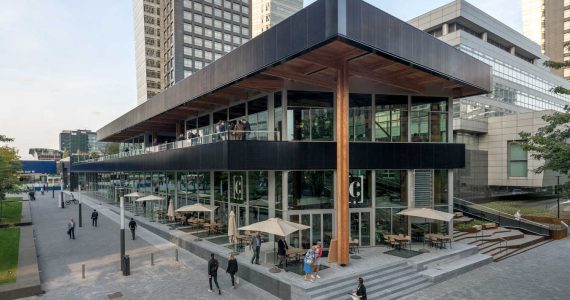
Should direct current be widely used in office buildings?
The expanded use of renewable energy sources and self-consumption make it possible to consider DC architecture in office buildings. The solution has advantages, subject to further experiments.
With the growth of renewable energy sources, electricity generation is moving towards a decentralised model in which electricity is produced and consumed locally. Solar panels and storage systems are coming into widespread use, and they supply direct current.
Meanwhile, direct current in increasingly used in building applications with the spread of digital technology, electronic equipment and batteries.
These terminals are now supplied by an internal or external inverter to transform 230 V AC voltage into DC voltage that they can use. When applied to solar self-consumption, this therefore involves dual conversion with associated power losses.
Promise and limits of direct current
The use of DC is said to have several advantages. It:
- reduces the amount of conversion equipment;
- optimises wiring by reducing it to two;
- gains seconds in generator synchronisation;
- facilitates the installation of Uninterruptible Power Supply (UPS).
Despite this promise, moving to this type of system is subject to uncertainties that could penalise its widespread use:
- lack of certification and standards;
- very limited and expensive range of electrical safety and protection equipment available;
- need for DC/DC unit conversion for equipment that does not all operate at the same voltage;
- lack of qualified installation and maintenance personnel.
Advantages for office buildings must be carefully weighed
The advantage of a DC or at least a hybrid grid depends, ultimately, on the use to which the building is put and on its generation and distribution infrastructure. The gains are easier to demonstrate in data centres and micro-grids with solar generation and a storage system, but they are more difficult to assess in office buildings.
In the Netherlands, for example, Direct Current BV installed DC systems in two office buildings equipped with solar panels. After one year in operation, gains of 20% are reported for the power supply system.
These gains must, however, be put in perspective: the company, which is very small, produces and sells DC protection equipment. The actual economic gains therefore remain to be shown.

Did you like the article ?



